Fear is difficult to be neutral, but it should be: it is natural defense mechanismwhich does not allow a person to excessively risk his health and life, keeps him from committing dangerous - and not only for himself - acts.
But under certain conditions, he is able to get out of control, turning into a phobia that poisons human existence.
Irrational fears are carefully studied by psychotherapists. Their research allowed to form list of the most common phobias with explanations, understand how they arise, and find effective treatments.
Fear - what is it?

The definition of fear, according to Ushakov’s explanatory dictionary, is timidity, anxietycaused by the foreboding of misfortune or danger.
She is familiar to everyone, from children to old people, and is not related to mental pathologies.
Many people share the concept of "fear" and "fear", believing that the first is stronger than the second, and that it is more reasonable to call a slight fear a fear, anxiety. But in general, the words "fear" and "fear" synonymous and usually interchangeable.
Fear - This is a strong fear that arises during contact with something dangerous (real or fictional).
When interacting with the object of fear adrenaline is thrown into human blood and cortisol, which allow it to mobilize forces to avoid danger.
Adrenaline also causes vegetative symptoms characteristic of feelings of fear: a person's heart rate increases, sweating increases, blood pressure rises.
Psychology refers fear to emotions, not feelings. However, fear can also be attributed to feelings, if it lasts long enough, appears regularly and is able to influence the person’s personality.
- fear as an emotion lasts a short time and is designed to launch the body's defenses;
- fear as a feeling persists for a long time, able to change, to become more profound.
If you delve into the terminology, fear can, with certain manifestations relate to affect: a very acute, but short-lived condition that significantly affects a person’s physical and mental state.
 According to one of the classifications, affect is one of the four emotional processes, is the most intense and the shortest of all.
According to one of the classifications, affect is one of the four emotional processes, is the most intense and the shortest of all.
Affection refers to fright, which is often accompanied by fear, panic.
Fears are not always rational: a person may be afraid of what is not dangerous for him. In such cases, fear is called irrational. The causes of its occurrence is not always possible to track, and often it is associated with negative events that occurred in childhood, in infancy.
Sometimes irrational fear replaces the real. For example, a little girl who was raped in a room where there is a poster with a cat can become very afraid of cats, especially those that look like a cat from a poster.
At the same time as an adult, she may not remember the events of rape or remember them vaguely, but the phobia will remain with her.
Some people are more prone to fear than others. The reason for this is individual sensitivity, which psychology calls sensitivity.
Sensitive people often develop phobias and various mental disorders. Fears arising from this personality trait are called sensitivities.
Fear and phobia - where is the line? The psychologist comments:
Social: types and specificity of their manifestation
Social fears - vast group of fearsdeveloping due to the presence of extensive negative experiences in the field of social interactions. They are also called social phobias.
Social fears are divided into the following types:
 Ereytofobiya. A person is afraid to turn red when there are people around him, especially if there are a lot of them. Ereytofob in society looks anxious, overly tense, often hesitate to use active gestures, clamped, tightly compressed lips, trying to stay away from the crowd (standing at the wall, trying to quickly get to where he feels more comfortable).
Ereytofobiya. A person is afraid to turn red when there are people around him, especially if there are a lot of them. Ereytofob in society looks anxious, overly tense, often hesitate to use active gestures, clamped, tightly compressed lips, trying to stay away from the crowd (standing at the wall, trying to quickly get to where he feels more comfortable).- Fear of speaking in front of people. The reasons for its appearance are different, but they are usually associated with the fear of being mistaken, of showing oneself before the crowd not with the best hand. A person is afraid of receiving ridicule, criticism, insults or any other reaction unpleasant for him (for example, bewilderment, refusal of the crowd to interact with him, to answer prepared questions). Some people who have this fear, it is so strong that they are afraid to speak in front of a small number of listeners, even if they relate to it positively. There are also people who are afraid to talk to strangers in principle, and they even get anxious when they need to talk to a doctor, a distant relative, a teacher, a seller in a store.
- Fear of not being able to perform certain actions in the presence of people, especially strangers. People who have this fear, try to be completely inconspicuous, because they are afraid to get a negative reaction from other people. They refuse to visit places with large crowds.
Social fears often occur in people who often encounter a negative reaction, such as people with disabilities (especially if they have external defects, problems with coordination of movements, speech disorders), people who are overweight, and those who do not have the appearance of the majority. About beauty, people with speech features and many others.
People with social fears may have a phobic attack, when they are in society. It is accompanied by the following symptoms:
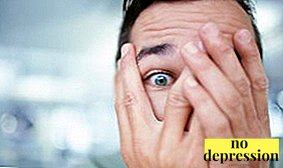 increased sweating;
increased sweating;- trembling in limbs;
- heart palpitations;
- problems with speech (stuttering, trembling voice, difficulty in trying to formulate a clear answer to the question);
- apathy;
- marked deterioration of mood.
Those who have social fears extremely difficult to work in areas where it is necessary to actively contact people, it is not easy for them to find a partner and friends, and people who do not have communicative problems often treat them negatively or cautiously.
How to overcome fear and social phobia? Find out from the video:
What does the word "phobia" mean?
What are phobias? There is a thin line between fear and phobia, but it is more than real to distinguish one from the other.
Fear - a natural emotional state that is capable of delivering discomfort, but cannot significantly impair a person’s life. It is fairly easy to control, and the mechanism of its appearance is explained.

Phobia poisons life, makes it constantly adjust, and individual phobias change a person’s personality, make him extremely suspicious, anxious, withdrawn, make him repeat the same actions for protection (for example, a person with the fear of germs has to wash his hands several dozen times a day) .
At the same time, fear appears even upon contact with stimuli that do not pose a danger, therefore phobias are also called irrational fears.
Even words can activate an attack of fear if contain trigger - Something with which the phobia is connected.
A person with the fear of airplanes can be intimidated by the words “flew out”, “airplane”, images of an airplane, materials about flights, that is, something that cannot harm him.
Phobia is not considered a mental illness, but is often a symptom of other mental disorders: neurosis, obsessive-compulsive disorder, panic and anxiety disorder, schizophrenia.
There is a separate category in ICD-10. "Phobic anxiety disorders" (F40), in which phobias are the key symptom.
In addition to social fears and phobias, there are also:
- Biological. These fears were with people throughout the entire period of human development and concern what threatens health and life in any way. This is the fear of predatory animals, when it is scary to fall from a great height, the fear of thunder, fire, earthquakes, the fear of spiders, scorpions, snakes. Any fears can transform into phobias under certain conditions.
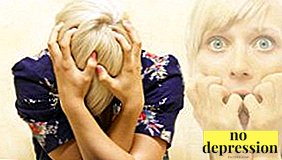 Existential. They are familiar to all people to one degree or another, based on the essence of man and are associated with life, being in general. These include the fear of time, aging, change, uncertainty, death, fear of the whole mysterious and unknowable, the fear of losing one's identity, of becoming mad. Fear of open and closed spaces also belongs to the group of existential fears.
Existential. They are familiar to all people to one degree or another, based on the essence of man and are associated with life, being in general. These include the fear of time, aging, change, uncertainty, death, fear of the whole mysterious and unknowable, the fear of losing one's identity, of becoming mad. Fear of open and closed spaces also belongs to the group of existential fears.
By the time the phobias appear, they are divided into:
- Primary. These phobias appear first and can become the basis for secondary fears. For example, there is a person who has tanatofobiyu - the fear of death. This strong fear is his primary fear.
- Secondary. As life progresses, a person analyzes his phobia, encounters new information that carries triggers, which he is able to logically associate with his primary phobia. Therefore, people with thanatophobia can also have other phobias: the fear of aging, because it leads to death, the fear of becoming ill with a serious or incurable disease, the fear of dying in a dream, the fear of funeral accessories, corpses, and cemeteries.
By focus distinguish:
- phobias in which the source of fear is something from the outside world. These include the zoophobia complex (herpetophobia, insect phobia, islurophobia, and many others), hydrophobia, astrapophobia and almost all biological and social phobias;
- phobias, the source of which is inside the person. These include thanatophobia, nosophobia and others.
List of human phobias in alphabetical order and their meaning.
The most common
Most often people have the following phobias:
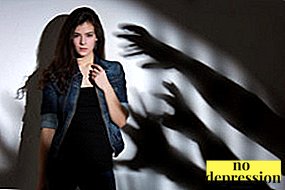 Tanatophobia - pathological fear of death. It occurs even in children 5-7 years old, and not only in adults and the elderly. Thanatophobia is much more difficult to cure than most phobias known to mankind, since the nature of its occurrence is very complex, and even eminent psychotherapists face difficulties when trying to help patients. The most acute forms of the fear of death are observed in middle-aged people. The spectrum of phobic stimuli here is huge and depends on the individual characteristics of a person. And often as triggers are thoughts, reasoning, and not external information.
Tanatophobia - pathological fear of death. It occurs even in children 5-7 years old, and not only in adults and the elderly. Thanatophobia is much more difficult to cure than most phobias known to mankind, since the nature of its occurrence is very complex, and even eminent psychotherapists face difficulties when trying to help patients. The most acute forms of the fear of death are observed in middle-aged people. The spectrum of phobic stimuli here is huge and depends on the individual characteristics of a person. And often as triggers are thoughts, reasoning, and not external information.- Nosophobia - a strong fear of falling ill with any disease, especially incurable or hard to cure, which can turn a person into an invalid and make his life unbearable. Essentially, nosophobia is a group of irrational fears that includes cancer phobia — fear of getting cancer, cardiophobia — fear of heart disease, manophobia — fear of mental disorder, syphilophobia — fear of contracting syphilis. Nosophobia is suspicious, it often has hypochondria, and any, even slight, deterioration of the condition makes him think that he is seriously ill.
- Acrophobia - fear of heights. The acrophobic, which turned out to be at a high altitude, experiences a severe panic, which is accompanied by excessive sweating, increased heartbeat, nausea, dizziness. Therefore, acrophobes tend to avoid heights by any means. Acrophobia is often combined with aerophobia.
- Aerophobia - fear of flying on airplanes. About 15% of people have this phobia. It may have a different mechanism, for example, some aerophobes are afraid to fly on airplanes for fear of getting into a plane crash, others are simply afraid of heights, and still others experience panic while in a confined space.
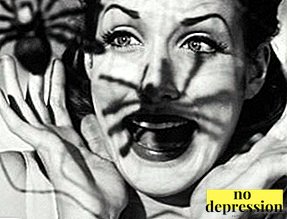 Zoophobia - group of fears related to the animal world: ornithophobia - fear of birds, kinofobiya - fear of dogs, arachnophobia - fear of spiders (which is also an extremely common fear - about 40-50% of people have it, but not always in the form of a phobia), insectophobia - fear of insects, elurofobiya - fear of cats.
Zoophobia - group of fears related to the animal world: ornithophobia - fear of birds, kinofobiya - fear of dogs, arachnophobia - fear of spiders (which is also an extremely common fear - about 40-50% of people have it, but not always in the form of a phobia), insectophobia - fear of insects, elurofobiya - fear of cats.- Claustrophobia - fear of being in a confined space. 4-8% of people have this phobia. They are afraid to ride the elevators, panic, getting into closed zones, from which you can not leave at will (planes, train cars, helicopters, cars), avoid toilet cabins and rooms without windows.
- Agoraphobia - fear of open spaces. Most often it develops after 20-25 years and often leads to the development of depression in a person. Agoraphobes fear areas, open markets, parks, fields. Fear is often combined with the fear of large crowds of people, public places (shops, hospitals, restaurants). Some agoraphobes try to leave the house as little as possible.
- Necrophobia - pathological fear of corpses, coffins, crosses, gravestones and everything connected with the funeral theme. Necrophobes avoid burial and may refuse to attend, even if their loved one is buried. They experience a panic, seeing corpses, the process of dying and burial in movies, in pictures, reading about it in books.
- Nicothobia - fear of the dark. This phobia is most common in childhood - about 80% of children are afraid of darkness, and some of them carry it into adulthood: 5-10% of adults also have a fear of darkness. Some are afraid of something that may be hidden in it, they get scared when they see an intricate silhouette, while others are afraid of the darkness by itself. Niktofobes hardly fall asleep without night-lights, and some even sleep by light.
Therefore, nosophobes are over-often examined or, on the contrary, avoided hospitals in order not to hear that there really is a dangerous disease.
Some necrophobes, on the contrary, are beginning to be fanatically interested in this subject and admire it.
Top 10 most common phobias:
The strangest
People have very strange phobias, for example:
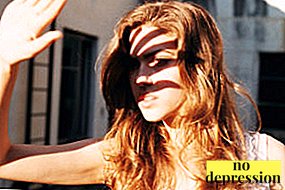 Aurofobia - pathological fear of gold.
Aurofobia - pathological fear of gold.- Heliophobia - fear of the sun and sunlight. Associated with fears that the sun will worsen health, will lead to diseases.
- Computer phobia - fear of computers. People are afraid that computer radiation is extremely dangerous, or that they will break it by accident, or that such inventions are a step towards the uprising of machines. Computer phobia is often observed in older people.
- Dextrophobia - fear of objects that are on the right side. Dextrophob avoids interacting with such items, opens only the doors that are on the left, does not look to the right.
- Panophobia - fear of everything. This phobia worries a person continuously: he is terrified of any changes and constantly thinks that something bad is about to happen.
- Stazobazofobiya - fear of walking or standing still. Often observed in people with neurological diseases, which is difficult to maintain balance.
- Eichofobiya. People with this phobia are afraid to listen or say good wishes.
- Hirophobia - fear of experiencing positive emotions in inappropriate circumstances, for example at a funeral, memorial service, in the church.
Most phobias can be cured if you contact a psychotherapist as soon as possible.
The longer the phobia lives with the person the harder it is to get rid of itbecause it changes his personality, overgrows with secondary phobias, causes mental disorders, including neurosis, depression, hypochondria.
Psychotherapists use various methods of getting rid of irrational fears, prescribe medications, teach self-control, and gradually the phobia weakens, allowing you to breathe freely.
TOP 20 the most incredible phobias:

 Ereytofobiya. A person is afraid to turn red when there are people around him, especially if there are a lot of them. Ereytofob in society looks anxious, overly tense, often hesitate to use active gestures, clamped, tightly compressed lips, trying to stay away from the crowd (standing at the wall, trying to quickly get to where he feels more comfortable).
Ereytofobiya. A person is afraid to turn red when there are people around him, especially if there are a lot of them. Ereytofob in society looks anxious, overly tense, often hesitate to use active gestures, clamped, tightly compressed lips, trying to stay away from the crowd (standing at the wall, trying to quickly get to where he feels more comfortable). increased sweating;
increased sweating; Existential. They are familiar to all people to one degree or another, based on the essence of man and are associated with life, being in general. These include the fear of time, aging, change, uncertainty, death, fear of the whole mysterious and unknowable, the fear of losing one's identity, of becoming mad. Fear of open and closed spaces also belongs to the group of existential fears.
Existential. They are familiar to all people to one degree or another, based on the essence of man and are associated with life, being in general. These include the fear of time, aging, change, uncertainty, death, fear of the whole mysterious and unknowable, the fear of losing one's identity, of becoming mad. Fear of open and closed spaces also belongs to the group of existential fears. Tanatophobia - pathological fear of death. It occurs even in children 5-7 years old, and not only in adults and the elderly. Thanatophobia is much more difficult to cure than most phobias known to mankind, since the nature of its occurrence is very complex, and even eminent psychotherapists face difficulties when trying to help patients. The most acute forms of the fear of death are observed in middle-aged people. The spectrum of phobic stimuli here is huge and depends on the individual characteristics of a person. And often as triggers are thoughts, reasoning, and not external information.
Tanatophobia - pathological fear of death. It occurs even in children 5-7 years old, and not only in adults and the elderly. Thanatophobia is much more difficult to cure than most phobias known to mankind, since the nature of its occurrence is very complex, and even eminent psychotherapists face difficulties when trying to help patients. The most acute forms of the fear of death are observed in middle-aged people. The spectrum of phobic stimuli here is huge and depends on the individual characteristics of a person. And often as triggers are thoughts, reasoning, and not external information. Zoophobia - group of fears related to the animal world: ornithophobia - fear of birds, kinofobiya - fear of dogs, arachnophobia - fear of spiders (which is also an extremely common fear - about 40-50% of people have it, but not always in the form of a phobia), insectophobia - fear of insects, elurofobiya - fear of cats.
Zoophobia - group of fears related to the animal world: ornithophobia - fear of birds, kinofobiya - fear of dogs, arachnophobia - fear of spiders (which is also an extremely common fear - about 40-50% of people have it, but not always in the form of a phobia), insectophobia - fear of insects, elurofobiya - fear of cats. Aurofobia - pathological fear of gold.
Aurofobia - pathological fear of gold.

